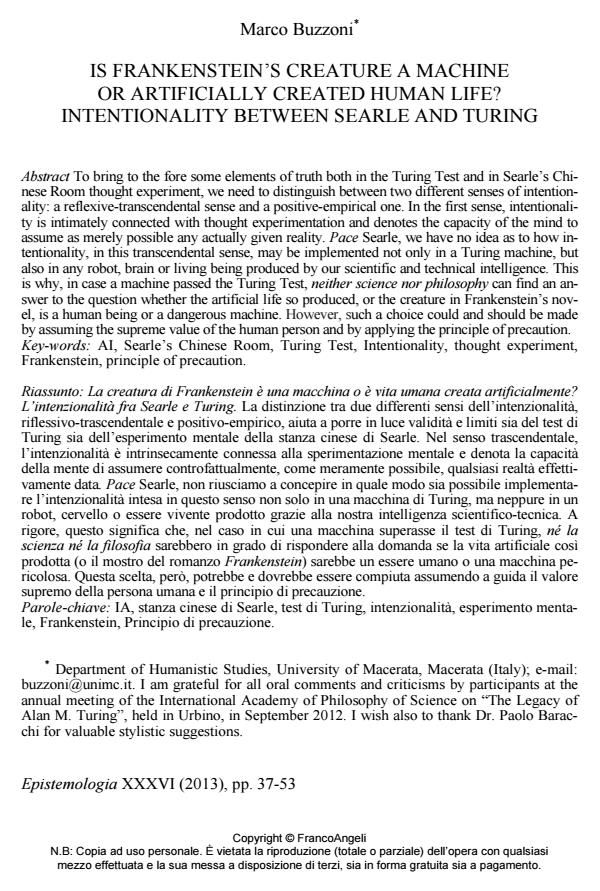La creatura di Frankenstein è una macchina o è vita umana creata artificialmente? L’intenzionalità fra Searle e Turing
Journal title EPISTEMOLOGIA
Author/s Marco Buzzoni
Publishing Year 2013 Issue 2013/1
Language English Pages 17 P. 37-53 File size 212 KB
DOI 10.3280/EPIS2013-001003
DOI is like a bar code for intellectual property: to have more infomation
click here
Below, you can see the article first page
If you want to buy this article in PDF format, you can do it, following the instructions to buy download credits

FrancoAngeli is member of Publishers International Linking Association, Inc (PILA), a not-for-profit association which run the CrossRef service enabling links to and from online scholarly content.
To bring to the fore some elements of truth both in the Turing Test and in Searle’s Chinese Room thought experiment, we need to distinguish between two different senses of intentionality: a reflexive-transcendental sense and a positive-empirical one. In the first sense, intentionality is intimately connected with thought experimentation and denotes the capacity of the mind to assume as merely possible any actually given reality. Pace Searle, we have no idea as to how intentionality, in this transcendental sense, may be implemented not only in a Turing machine, but also in any robot, brain or living being produced by our scientific and technical intelligence. This is why, in case a machine passed the Turing Test, neither science nor philosophy can find an answer to the question whether the artificial life so produced, or the creature in Frankenstein’s novel, is a human being or a dangerous machine. However, such a choice could and should be made by assuming the supreme value of the human person and by applying the principle of precaution.
Keywords: AI, Searle’s Chinese Room, Turing Test, Intentionality, thought experiment, Frankenstein, principle of precaution.
- The Agency Theory of Causality, Anthropomorphism, and Simultaneity Marco Buzzoni, in International Studies in the Philosophy of Science /2014 pp.375
DOI: 10.1080/02698595.2014.979668
Marco Buzzoni, Is Frankenstein’s creature a machine or artificially created human life? Intentionality between searle and turing in "EPISTEMOLOGIA" 1/2013, pp 37-53, DOI: 10.3280/EPIS2013-001003